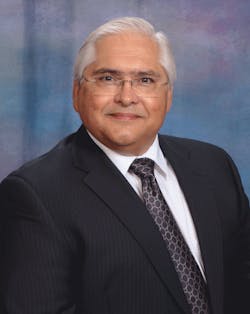What You Don’t Know About Critical Speed Failures Can Hurt You
Two men were test running a rebuilt pickup truck in a home garage when an unexpected failure caused the truck to catch fire. The ensuing inferno burned one of the men while destroying the garage and truck. An examination of the truck showed the fuel tank had been punctured. Leaking gasoline had been ignited either by hot exhaust components or sparks from a broken driveshaft.
The tubular-steel driveshaft had just been replaced as part of the rebuild. When it failed, it shattered into three pieces and flailed around until the engine stopped, making it more difficult to determine what damage happened before and during the failure. Possible causes included improperly installed fasteners, metallurgical defects, design problems, and fabrication errors. Investigators found no loose or broken fasteners, and the cardan or U-joints at the ends of the driveshaft were secure and intact. They therefore quickly ruled out joint failure and fastener-installation problems.
Metallurgical analysis revealed the unexpected presence of zinc on some of the fracture surfaces. Investigators chalked up its presence to postfailure impacts between the shaft fragments and other zinc-plated parts under the truck. The fractures lacked the characteristic appearance of fatigue failures, and the driveshaft had only been running for a few minutes when it failed. The fracture surfaces had the appearance of ductile rupture. The failures were in the body of the driveshaft, not at welded seams. The failed driveshaft had flattened sections typical of buckling failures.
As it turned out, the truck rebuild was not a simple reconditioning effort. The men had replaced the engine with a larger displacement V8, and the manual transmission had been replaced with a three-speed automatic not sold with this vehicle. These modifications altered the geometry of the driveline and necessitated fabricating a new driveshaft. The new shaft, specified by the owner but fabricated by a local shop, was slightly longer and built with tubing having a smaller diameter than the original. These modifications proved to be disastrous.
Critical speed failures are a familiar concern for engineers who design rotating machinery. The general public is mostly unaware of this risk. A critical speed failure happens when the rotational speed of the component approaches one of its natural frequencies, usually the lowest. Bending vibrations of the component are excited by the rotation and can quickly build up to amplitudes high enough to cause structural failure.
In this case the shaft modifications lowered the natural frequency of the unit and allowed a critical speed failure. A contributing factor was the lack of a speed limiter on the V8 engine. The engine could easily exceed redline as the owner revved it. Because the truck was supported on jack stands, the driveline was also unloaded and more susceptible to overspeed. The modifications to the driveline design created an unrecognized hazard, which led to the failure.
Had the individuals involved understood the effects of the modifications on the critical speed, this failure could have been avoided.

